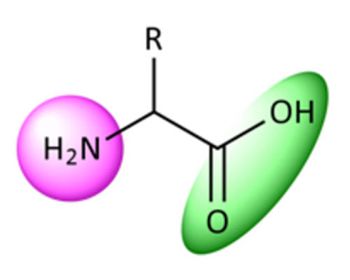
HPLC Mobile Phases – 10 bad habits to avoid
The 10 bad habits to avoid when producing HPLC mobile phases.
1. Measuring the pH of the mobile phase after the organic has been added
pH meters are calibrated to give the correct pH readback in aqueous solution – the buffers you verify this with are aqueous. If you measure the pH with the organic added, the pH will be different to that of measuring before organic addition.
However, the most important point is to be consistent. If you do always measure pH after the organic is added, make sure you state this in the method so that everyone does it the same way. It won’t be 100% accurate, but at least it will be consistent. This is probably more important than having the exact pH.
2. Not using a buffer
Buffers are present to control pH and resist a change in pH. Many other parts of method (e.g. sample matrix, CO2 in air, source of water used for your mobile phase) can change the pH of the mobile phase causing shifts in retention, peak shape and peak response.
Formic acid, TFA etc. are not buffers.
3. Not using the buffer in its correct pH range
Each buffer salt has a 2 pH unit wide range over which it provides the optimal pH stability. Outside this window the salt is ineffective at resisting change in pH.
Either use your buffer within the correct range or pick a buffer whose range covers the pH you require.
4. Adding buffer to organic
Mixing aqueous buffer into the organic phase carries a high risk of the buffer being precipitated – in many cases so finely that it may not be obvious it has happened. ALWAYS add the organic to the aqueous phase, this greatly reduces the risk of buffer precipitation.
5. Using the pump to mix gradients from 0%
Modern pumps are very effective at mixing mobile phases and degassing online, however not everyone who ends up using your method has a high quality pump. Premix your A and B starting mix to a single solution that runs at 100% on line A. e.g. Prepare the starting mixture by mixing 950ml Aqueous with 50ml organic, then filter and degas. This reduces variability between HPLCs, reduces the risk of bubbles and precipitation in the system. Note however that 95:5 mixed on the pump will not give the same retention time as 95:5 premixed in the bottle – you normally need to add a few more percent organic when premixing.
6. Not using the correct pH modifying acid or base for your buffer
Only use the acid or base that forms the buffer salt you are using. E.g. sodium phosphate buffers should be adjusted with only phosphoric acid or sodium hydroxide.
7. Not stating the full information of your buffer in the method e.g. weigh 5g of sodium phosphate into 1000ml of water
The type of buffer (mono, di or tribasic) determines its pH buffering range.
The required molarity is what determines the buffer strength. 5g or anhydrous sodium phosphate and 5g of monohydrate sodium phosphate will have different buffer strengths and will affect retention.
8. Filling lines with organic without checking what was in there before
If the previous method used buffer in line B and your method uses organic in line B there’s a good chance you will precipitate buffer in your pump tubing / pump head. I did it in my early days and it caused a lot of damage. If in doubt – flush it out (80:20 water : organic).
9. Propping up bottles to get last drop out
It’s 5 to 5 and you’ve barely got enough mobile phase to finish the run – it’ll be running on fumes by the last few samples. Apart from the risk or running your pump and column dry, mobile phases evaporate from the surface, so the mobile phase at the top of the bottle will have changed composition from the bulk. This portion from the top is exactly what will be running through the column if you use the last dregs in the bottle.
10. Using sonication to degas mobile phase
It’s great for making sure all your buffer salts have dissolved, but it’s the least effective method of degassing AND it quickly heats up the mobile phase causing the organic portion to evaporate. Save yourself problems later – take 5mins to vacuum filter your mobile phase – it degasses and filters in a single step.
Newsletter
Join the global community of analytical scientists who trust LCGC for insights on the latest techniques, trends, and expert solutions in chromatography.



